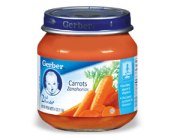As you can tell, I like lentils! And tomatoes.
It’s getting to the kind of weather where I begin to think about “salads” for hot-weather meals. I know it’s a bit early for this since tomatoes not ready to pick yet. While I was writing about lentils, shortly after planting some tomato seeds (Black Krim, Japanese Black Trifle, Black Pearl, Brandywine, Indigo…..) I couldn’t help but think of this salad with some anticipation as I planted the Black Pearl cherry tomato seeds.
Lentil & Couscous Salad with Cherry Tomatoes, Mint and Goat Cheese
This is my adaptation of the recipe from Gourmet 1995, retrieved from Gourmet on Epicurious with a few changes from me. (This is a great place to browse for salad inspirations. You don’t need to follow the recipes–just look at the ingredients and make a salad.)
Ingredients
- 1 cup lentilles du Puy (French green lentils) or brown lentils (or any small lentil that will hold its shape well)
- 3 tablespoons sherry vinegar (The original recipe calls for white wine vinegar–but I prefer sherry; use what you have at hand.)
- 1-1/4 cups water
- 1 cup couscous
- 1/2 teaspoons salt
- 1/4 cup olive oil (preferably extra-virgin)
- 1 large garlic clove, minced and mashed to a paste with 1/4 teaspoon salt
- 1/2 cup finely chopped fresh mint leaves (spearmint, rather than peppermint)
- 1 bunch arugula, stems discarded and leaves washed well, spun dry, and chopped
- 2 cups vine-ripened cherry tomatoes, halved.
- 1/4 pound feta, crumbled (about 1 cup)
Preparation
- Cook the lentils in a small pan, covered by about 2 inches of water until tender but not getting mushy. The lentilles du Puy cook more slowly than other varieties, so if you substitute, watch them carefully to keep from over-cooking them. My preference is for the french, Spanish brown, or black lentils instead of the brown.
- When tender, drain well and transfer to a bowl. Stir in 1 tablespoon of the vinegar, salt and pepper to taste.
- Prepare the couscous: bring water to a boil and couscous and salt (use the package directions). Remove from heat and let stand until the water is absorbed. Fluff and transfer to a bowl. Stir in 1 tablespoon of the extra-virgin olive oil and cool.
- Dressing: Whisk together the garlic paste, remaining vinegar (to taste), and oil. Add salt and pepper to taste.
- Add the lentils and dressing to the couscous and mix well. Chill well–about 2 or 3 hours.
- Before serving, add the crumbled goat cheese and the mint leaves.
One problem I’ve found is that the cherry tomatoes can give off a lot of liquid and make this salad too juicy. I like to toss the halved cherry tomatoes with about 1/2 teaspoon kosher salt and let them stand in a colander for about 15 or 20 minutes before I add them to avoid the excess juice. This doesn’t make them “salty”–but do taste before you add the last salt to taste. This will hold well in the fridge for about 24 hours if you’ve gotten some of the excess liquid from the cherry tomatoes.
My favorite garnish for this is crispy slices of European style cucumbers and crispy, crunchy radishes on the side as well.



